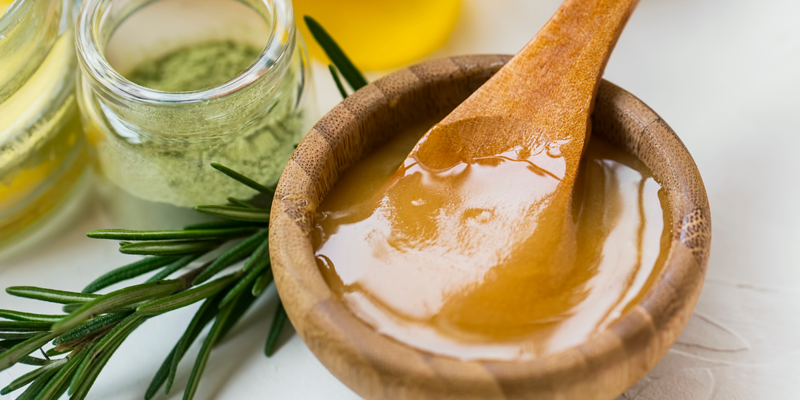Tea tree oil is the stuff of legends. Literally. Native to coastal Australia, the tea tree has been used as a medicinal plant by the Australian Aborigines for as long as their cultural memory to treat wounds and prevent and fight infections.
What Is Tea Tree Oil
When Captain James Cook arrived in Australia on the H.M.S. Endeavor and landed at the aptly named Botany Bay, he and his crew ‘discovered’ a grove of tea trees. Intrigued by their sticky leaves and aroma, he inquired of the local people who explained how they crushed the leaves and applied them as a poultice. Europeans began using the tea tree in the same way, as well as making a nutmeg, or eucalyptus, smelling tea out of its leaves that was purported to help with illnesses and fevers. (Source).

The tea tree (Melaleuca Alternifolia) is a member of the family myrtaceae. Myrtle and Sassafrass are also aromatic members and all produce oils that are recognized for helping with skin healing when used topically and for warding off, and killing, insects and parasites while preventing infection. It is not related to the tea plants used for green or black tea. The oils that are used for cosmetic and medicinal purposes are extracted from the leaves and twigs of the plant. There are over 100 compounds, and 15 major components that have been isolated in tea tree oil. However, the one that seems to be of the most significant benefit in facial cosmetics is 4-terpineol, otherwise known as Terpinen-4-ol, or T4O which has been used in the treatment of demodex.
How Is Tea Tree Oil Used

Cliradex is the one of the rare eyelid cleanser with 4-terpineol – providing deep clean removal of biomaterials unlike regular tea tree oil (TTO) products that rely on other compounds. T4O as an isolated compound derived from tea tree oil, when used as the main component in cosmetic products interrupts the life cycle of demodex mites that are related to a number of skin and eye issues.
Hundreds of studies have been published and articles written about tea tree oil and T4O and its beneficial properties. As a topical solution it can help with skin appearance. This mass of scientific evidence has made TOO so well recognized, so widely used in products around the world, and in such demand, that the plant is now commercially grown and harvested in additional countries to its native Australia. There is no reason to believe that demand for TTO will slow down.

We see Cliradex customers increasingly looking to our product to help with their acne and other facial skin problems and as we wrote in our piece on How Cliradex Is Different From Other Deep Facial Cleansers:
A lot of facial skin problems are a little trickier to deal with. More severe cases of acne often involve established bacterial infections that require something stronger than a gentle detergent to fully get rid of them. Even more problematic are demodex mites, more commonly known as eyelash mites. These microscopic bugs spend most of their lives hidden far down inside your pores and eyelash follicles. There, they are safe from most of the weapons in your antimicrobial arsenal. While Demodex infestations are very common and usually aren’t problematic, if they get out of hand they can contribute to a whole array of skin issues like inflammation, flaking, rosacea, and irritation, including itching, dryness, swelling, and redness.
Tea Tree Oil for Sensitive Skin
A 5% dilution of the oil seems to be safe for most people to use on their skin in creams and other solutions. People using higher concentrations and those with sensitive skin may experience significant irritation, however. Many cosmetic products use this amount, or less. Cliradex has isolated T4O from the oil and uses just that compound. Concentrations above 10% are sometimes used to treat toenail fungal infections and bad cases of athlete’s foot.
The main issue of TTO is that it is actually harsh to the skin if used too long or in too much concentration. Thus it has to be diluted, which diminishes its benefits. For instance, in use with demodex mites any concentration below 10% is inefficient. Isolated, T4O is a much more effective and efficient. However, TTO remains a popular ingredient in cosmetics for good reason.
For the consumer, howerever, it is important to remember that many products use varying quantities and quality of the oil and/or its compounds. This means that many products may be made without the right amount of the active compounds to make the difference clained and it can be dangerous to the skin. That said, while it is unlikely that the amount of tea tree oil included in commercial products is going to cause damage to your skin, the main issue with the use of TTO is that it has to be diluted which diminishes its benefits. Unless you are diligent and informed shopper, you are unlikely to maximize its true benefits either, which is the entire point of using facial products with it.
If you have a true skin issue and/or sensitive skin around your eyelids that you are hoping tea tree oil will help with, whether it is acne, rosacea, or blepharitis (all of which can be caused, or complicated by demodex mites) it is wise to have a conversation with your dermatologist or opthamologist. Ask them about using a product like Cliradex to eliminate the mites which might be causing the issue.






